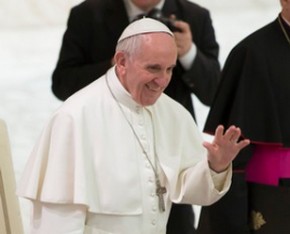The exile and the promise/24 – In the absence of physical spaces and confines we learn how to worship God “in spirit and in truth”
by Luigino Bruni
published in Avvenire on 21/04/2019
« To the religious person space isn’t homogenous. This non-homogeneity manifests itself in a veritable contraposition between the sacred space, the only thing that is truly real, that truly exists, and the vast formless expanse which surrounds it. »
Mircea Eliade, The sacred and the profane
The great trials in life often work as a purification of our spirituality and moral principles, because they teach us that the things that are really necessary in order to continue living and growing are actually very few and rather simple. In a positive evolution of our spiritual life, we start simple, become complex, and end up coming back to being simple, when the wisdom of the old person we’ve become encounters the purity of the youth we once were, and in the midst of it all that remains is an immense appreciation and gratitude. While crossing vast stretches of deserts you learn that, in addition to water and bread, only a handful of things are actually truly essential – it is on brief and comfortable trips that we tend to carry a load of heavy and to a large extent unnecessary luggage. Elijah the prophet had to find himself in the desert, with a desire to die in his heart, in order to discover the voice of God in a “faint breeze”, after having imagined and searched for Him in vain in earthquake and fire (1 Rev 19,12). Thirsty for life and paradise, we spend many a year searching for God in temples and sacred places, only to finally realize, that what we seek was, simply, just around the corner.
One day in Jerusalem, on the Mount Zion, Ezekiel once again carried away in a vision: «In the twenty-fifth year of our exile, at the beginning of the year, on the tenth of the month, in the fourteenth year after the fall of the city—on that very day the hand of the Lord was on me and he took me there » (Ezekiel 40,1). After seeing the resurrection of the withered bones of his perished people in chapter 37, now the prophet sees the resurrection of the temple, having been destroyed fourteen years before. Ezekiel had envisioned and foretold the destruction of the temple years before it happened, and had built his entire prophetic life in exile around this “theological” destruction. And so one day, by now near the end of his life’s mission, he received the gift to see the new temple in the new Jerusalem, as a token of the coming end to the exile and the restoration of a new Israel of a «new heart».
To Ezekiel the temple of Yahweh, the true and different God, was something of extreme importance. Ezekiel is an old-world, Middle Eastern man, a clergyman. In his world, he would not have been able to profess a faith in which « the true worshipers will worship the Father in the Spirit and in truth» (John 4,23). The glorification of God needed its place of worship. But between Ezekiel and the prophets and clergymen who preceded him, a decisive historical event took place: the Babylonian exile.
Ezekiel carried out his entire mission along the rivers of Babylon, and therefore in the absence of the sacred place of a temple. Hence, he had to learn a very essential form of faith, where not even attending a temple or the holy sacrifices where fundamental any longer. Life taught him at huge expense to simplify religion; the enforced absence of the material requirements for worship induced him to a more spiritual and abstract faith. Being a minister without a temple forced him to rethink what the temple really constitutes in relation to faith – and the true nature of ministry (as in the case of those who find themselves relearning priesthood while being constricted to a hospital bed powerless for months and years without a congregation or the ability to practise).
And so, exiled in a land without a temple but not without God, servant of a defeated but still true God, Ezekiel receives the vision of a new temple. He has carried out his entire mission while recalling, with increasingly faint colours, within his soul, the temple of Salomon where he studied in his youth; and now, at the end of his life, he sees it with prophetic eyes, as a “reward” for having completed the race and kept the faith in a God stripped of his temple alive: «In visions of God He took me to the land of Israel and set me on a very high mountain, on whose southern slope was a structure that resembled a city. So He took me there, and I saw a man whose appearance was like bronze. He was standing in the gateway with a linen cord and a measuring rod in his hand» (Ez 40,2-3). Under the guidance of a celestial being, Ezekiel sees an immense construction, describing all its architectural and religious characteristics in three long and very detailed chapters, which among other things give us the possibility to immerse ourselves in our minds in the biblical man’s experience of the sacred.
In a desecrated and disenchanted world, where by now the only remaining traces of the sacred are those marked by the consumption and corporate rituals of capitalism, we have completely lost contact with the ancient world to be able to understand what the manifestation of the sacred meant in that world, the hierophany. The first and immediate experience ancient man had of the world was that of chaos, a blurred and irrational whole where the only possible, inaccessible and incomprehensible, “order” was that run by demons. The religions of the world have also been an attempt to bring order to the chaos, through the identification of a few diverging spaces, holy places, equipped with a certain rationality and predictability, within the ordinary disorder. The altars and the sanctuaries, and in the Bible the veil, the arc, and finally the temple of Jerusalem, constitute the way in which those spaces have been managed, through the fundamental distinction between the sacred and the profane. In fact, the conclusion of the architectural description of the temple by Ezekiel is indicative: «So he measured the area on all four sides. It had a wall around it, five hundred cubits long and five hundred cubits wide, to separate the holy from the common» (Ez 42,20).
Even in the Bible, which has its own special relationship with the sacred, the temple is needed to separate the sacred from the profane. The sacred was made of time and space. The threshold of the temple delineated the space, separating it from the entire surrounding area, which on the surface may have appeared similar but was substantially different; however by crossing that border of space one entered a different time zone, and a different timeline began, (cronos became kairos), following a different rhythm, while a different clock showed a different time. Hence, in the general chaos of nature and social relationships, both at the mercy of forces and irrationality, when ancient man stepped over the threshold of time and overcame that threshold of time, he tasted eternity, and in that time-temple he beat death, the fear of which is one of the main origins of religion. In that eternal place he communicated with time, the cloud of fire was still descending over Mount Sinai, and there, beyond ordinary time and space, Moses was still and truly speaking with Yahweh, the people could not hear the voice but believed and saw something extra-ordinary. The temple is the new Sinai, where the ascension towards the top of the sacred mountain has become the procession towards the centre of the temple (the "Holy of Holies", the secret heart of the temple accessible to the high-priest only once a year, is the mountain top of the Sinai).
Maybe, all of this could be found in the heart of every Jew who stepped over the threshold of Salomon’s Temple, as well as in Ezekiel’s heart. The uncertain and chaotic passing of time and harshness of everyday life was interrupted, and in the hours of the temple you returned to the slopes of Mount Sinai, saw Moses once again, the sea parted once more, and you no longer felt like a slave. A marvellous experience, which turned that different space into Eden, where God was still walking in the «breeze of the day». The Jews did not feel the need to believe in paradise beyond life, because the touched it every time they went to the temple. This is why they were so madly in love with that place, and why they still shed tears over it.
Therefore, when Ezekiel towards the end of his vision, sees «the glory» of Yahweh returning to the temple from which it had disappeared before it was destroyed due to the unfaithfulness of the people, he relives the same experience of his prophetic calling by the Chebar river: «And the visions were like the vision that I saw by the river Chebar; and I fell upon my face. And the glory of the Lord came into the house by the way of the gate whose prospect is toward the east» (Ez 43,3-4). The return of the Glory in the temple provokes the same theophany in Ezequiel which he felt during his first calling, it makes him relive the most divine moment of his entire existence. Because to him and to his people nothing was as divine as the temple.
But we still have one more aspect left to add. The historical development of biblical faith has also constituted a great education on the concept of the sacred and the real location of God. During the most archaic phase the sanctuaries in Israel in which one could find Yahweh were more than one. Later, the House of Yahweh was redefined and limited only to the temple of Jerusalem. With the destruction of the temple and the exile, the people of Israel understood, thanks to the prophets, that God continued to be present in Babylon as well, and that experiencing the presence of the glory of God was not limited to the sacred boundaries of the temple. And even if the temple of Jerusalem was rebuilt after the exile, the idea that the presence of God had been liberated from the perimeters of his house, had marked a point of no return in the collective soul of the people, which forever changed the nature of religious experience. Having been able to feel the same presence of God far from their land and outside of the temple represented a deep mutation in biblical faith, maybe the most important one in the entire story of the salvation.
The criticism towards the temple which we find in the words of Jesus of Nazareth, which turned out to be decisive in his death sentence, would not have been possible without the previous experience of the exile and the religious revolution regarding the “sacred place” which during that time developed in the minds of the prophets and hence of the people. A part of the soul of Israel was able to recognise “the son of God” in that “son of man” who was crucified on Golgotha, hence outside of the realms of the sacred city, because centuries before the prophets had experienced and then taught everyone about the presence of Yahweh in exiled lands, without having a temple and finding themselves “outside of the walls”. They couldn’t know it then, but in Babylon the Jews began to worship God “in spirit and in truth”.
The gospels do not tell us of any apparitions of the Risen Jesus within the temple. Instead they talk about a house, a garden, the banks of a river, of two discouraged travellers on their way from Jerusalem. We can continue searching for Him in sacred places, visiting, building and rebuilding temples, and maybe, every once in a while we will feel His presence there as well. But the places where we certainly will feel it are the homes, gardens, river banks, talking to the disheartened and discouraged people who walk on our streets. Happy Easter.
download pdf article in pdf (269 KB)








